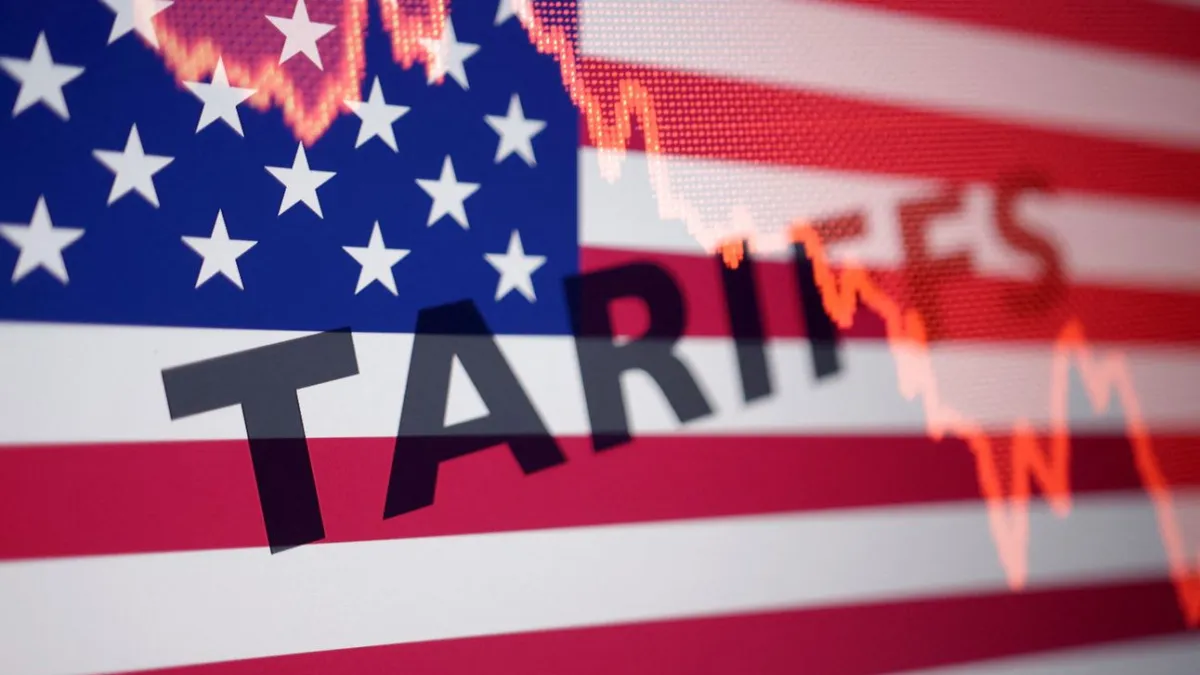
After a U.S. federal court on Wednesday evening rejected a key part of President Donald Trump’s burgeoning trade war, halting many of the tariffs he imposed unilaterally on countries around the world, an appeals court on Thursday allowed the tariffs to remain in place while the issue is litigated.
In response to a suit brought by several small businesses and about a dozen Democratic-led states, the U.S. Court of International Trade ruled unanimously Wednesday that Trump exceeded his legal authority when he claimed that the International Emergency Economic Powers Act of 1977, known as IEEPA, gave him unlimited power to impose tariffs via executive order on virtually any country.
“The court does not read IEEPA to confer such unbounded authority and sets aside the challenged tariffs imposed thereunder,” the three-judge panel said.
The trade court also ruled that the tariffs Trump imposed on China, Canada and Mexico due to supposed emergencies related to immigration and drug trafficking do not directly address those problems. Further, the persistent trade deficits the U.S. has with many countries are not “unusual and extraordinary” threats that would warrant new tariffs.
The ruling would have put most of Trump’s new tariffs on hold within 10 days, including across-the-board tariffs imposed on dozens of countries on April 2, which Trump called “Liberation Day.” But sector-specific tariffs on industries including steel and autos would remain in place, since they were imposed under a different legal authority.
On Thursday afternoon, the U.S. Court of Appeals for the Federal Circuit temporarily paused the trade court’s ruling. The pause is of indeterminate length, but the court has laid out a briefing process that extends through June 9.
Fight, or adjust: White House Press Secretary Karoline Leavitt told reporters that the administration would take the case to the Supreme Court if necessary. “America cannot function if President Trump — or any other president, for that matter — has their sensitive diplomatic or trade negotiations railroaded by activist judges,” she said.
Trump trade adviser Peter Navarro told Bloomberg that the administration is prepared for pushback from the courts. “If anybody thinks this caught the administration by surprise, think again,” he said. “Nothing’s really changed.”
Trade experts say the Trump administration has a number of options at its disposal to reimpose tariffs to some degree if the trade court’s ruling stands. Navarro cited Section 122 of the 1974 Trade Act, which empowers the president to impose tariffs of up to 15% for a duration of 150 days in order to address a “balance of payments deficit” or prevent a “significant depreciation in the dollar.”
Alec Phillips, an analyst at Goldman Sachs, noted that Section 122 tariffs do not require any formal process to initiate, so the White House could impose 15% tariffs quickly. After 150 days, Congress would need to formally extend the tariffs, though it’s not clear if the Trump administration could simply reinstate the tariffs after a brief hiatus without congressional approval.
Another option for the White House would be to double down on sectoral tariffs. “We already expect additional sectoral tariffs (pharmaceuticals, semiconductors/electronics, etc) and uncertainty regarding the IEEPA-based tariffs could lead the White House to put more emphasis on sectoral tariffs, where there is much less legal uncertainty,” Phillips wrote in a research note.
Section 338 of the Tariff Act of 1930 — also known as the Smoot-Hawley Tariff Act — provides yet another option for the administration, empowering the president to impose tariffs as high as 50% on any trade partner that “discriminates” against the U.S. in a way that puts the country at a disadvantage relative to any other country. However, that legal maneuver has never been tried before.
The bottom line: Courts will determine the constitutional validity of Trump’s tariff strategy, but no matter how the courts rule, the White House has plenty of options to maintain its trade war with much of the world.